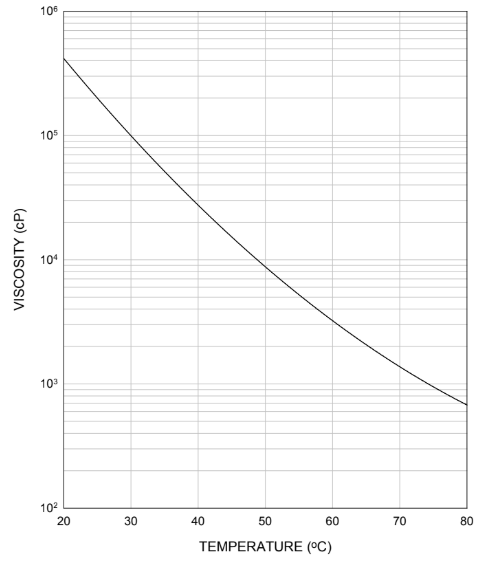Enhanced TDS
Identification & Functionality
- Blend
- No
- CASE Ingredients Functions
- Chemical Family
- Country of Origin
- Function
- Monomer
- Product Code
- MITM00458
- Single Ingredient
- Yes
- Technologies
- Product Families
Features & Benefits
- CASE Ingredients Features
- Performance Highlights
EBECRYL® 8800-20R is characterized by:
- Light color
- Crystalline semi-solid
- Low odor
UV/EB cured products containing EBECRYL® 8800-20R are characterized by the following performance properties:
- Excellent abrasion resistance
- Toughness
- Exterior durability
- Flexibility
- Chemical resistance
- Non-yellowing
The actual properties of UV/EB cured products also depend on the selection of other formulation components such as reactive diluents, additives and photoinitiators.
Applications & Uses
- Application Method
- Coating End Applications
- Compatible Substrates & Surfaces
- Cure Method
- Markets
- Applications
- Product Applications
Formulated UV/EB curable products containing EBECRYL® 8800-20R may be applied via direct or reverse roll, offset gravure, metering rod, slot die, knife over roll, air knife, curtain, immersion and spin coating methods. EBECRYL® 8800-20R is recommended for use in:
- Wood and vinyl floor coatings
- Coatings requiring exterior durability
- Coatings for wood and plastic
Properties
- Physical Form
Technical Details & Test Data
- Viscosity Reduction
Graph I - EBECRYL® 8800-20R - Viscosity reduction with reactive diluents

Graph I shows the viscosity reduction of EBECRYL® 8800-20R with 1,6-hexanediol diacrylate (HDDA), isobornyl acrylate (IBOA), trimethylolpropane triacrylate (TMPTA), and tripropylene glycol diacrylate (TPGDA). Although viscosity reduction can be achieved with non-reactive solvents, reactive diluents are preferred because they are essentially 100 percent converted during UV/EB exposure to form a part of the coating or ink, thus reducing solvent emissions. The specific reactive diluents used will influence performance properties such as hardness and flexibility.
Graph II - EBECRYL® 8800-20R - Viscosity vs. Temperature

Graph II illustrates the change in viscosity of EBECRYL® 8800-20R with increasing temperature.
Packaging & Availability
Principal Information
- Group Principal Number
- S000001
- Principal
Storage & Handling
- Storage Conditions
- Care should be taken not to expose the product to high temperature conditions, direct sunlight, ignition sources, oxidizing agents, alkalis or acids. This might cause uncontrollable polymerization of the product with the generation of heat.
- Storage and handling should be in stainless steel, amber glass, amber polyethylene or baked phenolic lined containers. Procedures that remove or displace oxygen from the material should be avoided. Do not store this material under an oxygen free atmosphere.
- Dry air is recommended to displace material removed from the container. Wash thoroughly after handling. Keep container tightly closed. Use with adequate ventilation.
- Upon storage, EBECRYL® 8800-20R may show signs of crystallization. This crystallization can be removed by heating containers of EBECRYL® 8800-20R to a uniform temperature of 60°C.
- Ovens or hotboxes are recommended methods of heating. Heating tapes should not be used. In typical formulations, EBECRYL® 8800-20R does not exhibit signs of crystallization.
Other
- Appearance
- Clear molten
- Appearance (SDS)
- Clear to hazy liquid
- Color (SDS)
- Colorless to pale yellow
- IATA/ICAO Proper Shipping Name
- Environmentally hazardous substance, liquid, N.O.S.
- IATA/ICAO Technical name (N.O.S.)
- Tripropylene glycol diacrylate
- IATA/ICAO UN Number
- UN3082
- IMO/IMDG Proper Shipping Name
- Environmentally hazardous substance, liquid, N.O.S.
- IMO/IMDG Technical name (N.O.S.)
- Tripropylene glycol diacrylate
- IMO/IMDG UN Number
- UN3082
- Insoluble in (SDS)
- Water
- Item Number
- Odor
- Low odor
- Odor (SDS)
- Acrylate
- Other Hazards
- Polymerization may occur from excessive heat, contamination or exposure to direct sunlight .
- Protect from Freezing
- Yes
- TDG Canada Proper Shipping Name
- Environmentally hazardous substance, liquid, N.O.S.
- TDG Canada Technical name (N.O.S.)
- Tripropylene glycol diacrylate
- TDG Canada UN Number
- UN3082
- Temperature Control
- Yes
- USA/DOT Proper Shipping Name
- Environmentally hazardous substance, liquid, N.O.S.
- USA/DOT Technical name (N.O.S.)
- Tripropylene glycol diacrylate
- USA/DOT UN Number
- UN3082
- Material Composition
Value Units Test Method / Conditions Isocyanate Group Content max. 0.16 % % Oligomer Content 72.0 %(W/W) %(W/W) - Mechanical Properties
Value Units Test Method / Conditions Elongation at Break 45.0 % % UV cured, 125µm thick films Tensile Elongation 45.0 % % at break, UV cured, approx. 125μ thick films Tensile Strength 3400.0 psi psi at break, UV cured 125 μ thick films Tensile Strength 3400.0 psi psi UV cured 125 µ thick films - Optical Properties
Value Units Test Method / Conditions Color Scale max. 2.0 Gardner Gardner Gardner Color Scale at 65.5°C - Physical Properties
Value Units Test Method / Conditions Density 1.01 g/mL g/mL at 25°C Glass Transition Temperature (Tg) 59.0 °C °C Dynamic Mechanical Analysis (DMA) at break, UV cured 125 μ thick films Glass Transition Temperature (Tg) 59.0 °C °C Dynamic Mechanical Analysis (DMA) UV cured, 125μm thick films Storage Temperature 39.0-104.0 °F °F Viscosity 1000.0-3000.0 cPs cPs at 65.5°C - SDS Physical and Chemical Properties
Value Units Test Method / Conditions Boiling Point (SDS) min. 100.0 °C °C Density (SDS) 1.0 g/cm³ g/cm³ Flash Point (SDS) min. 100.0 °C °C Vapor Pressure (SDS) max. 0.013 hPa hPa at 20°C Viscosity (SDS) 4500.0 mPa.s mPa.s at 23°C Volatile Content (SDS) max. 0.5 % % - Shelf Life & Stability
Value Units Test Method / Conditions Shelf Life 730.0 d d
